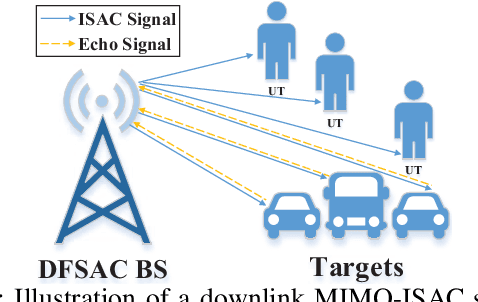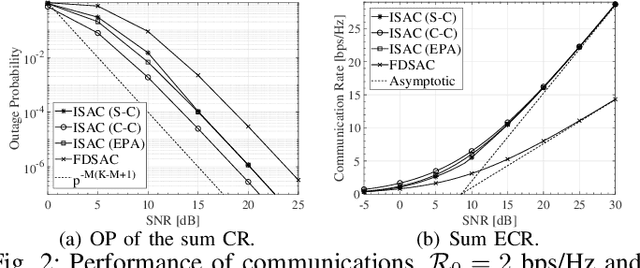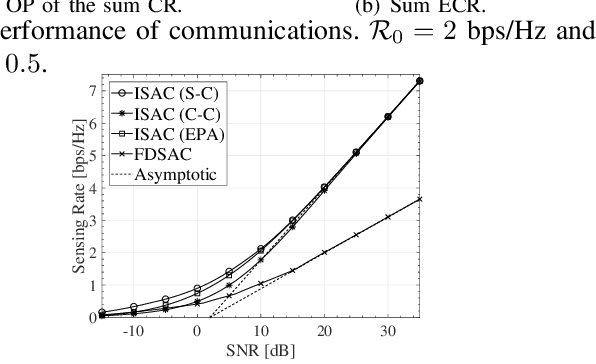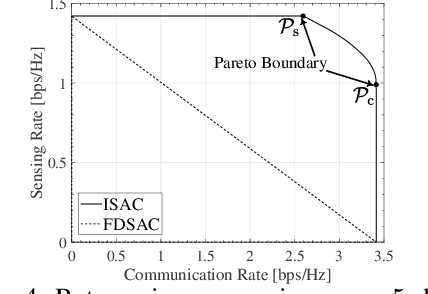On the Performance of Downlink MIMO-ISAC
Paper and Code
Sep 02, 2022



This letter analyzes the performance of sensing and communications (S\&C) achieved by a multiple-input multiple-output downlink integrated S\&C (ISAC) system. Three typical ISAC scenarios are studied, including the sensing-centric design, communications-centric design, and Pareto optimal design. For each scenario, diversity orders and high signal-to-noise ratio slopes of the sensing rate and communication rate are derived to gain further insights. It is found that ISAC can provide more degrees of freedom and a broader rate region than existing frequency-division S\&C (FDSAC) techniques.
* 5 pages
 Add to Chrome
Add to Chrome Add to Firefox
Add to Firefox Add to Edge
Add to Edge